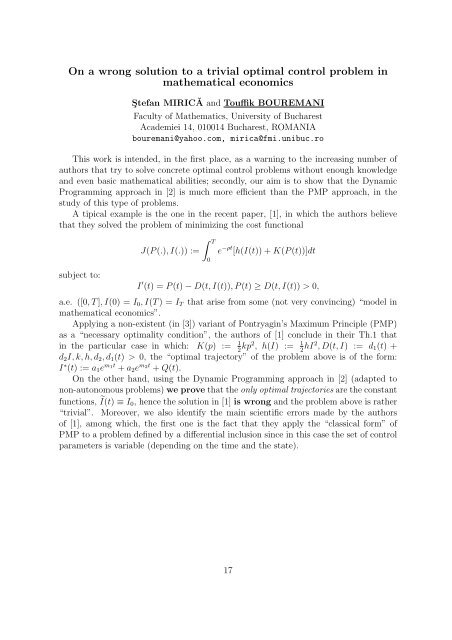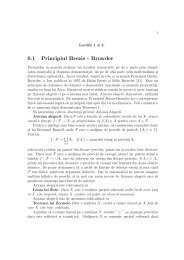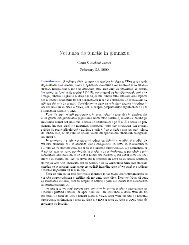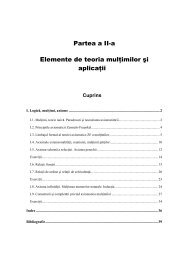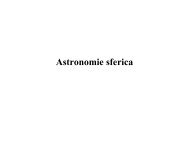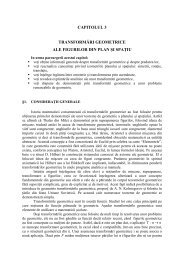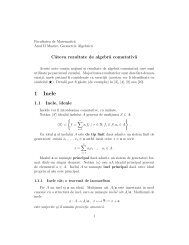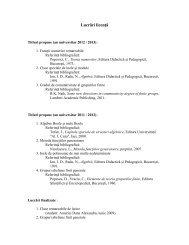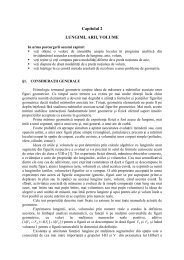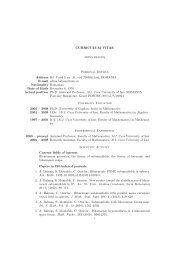Abstracts - Facultatea de Matematică
Abstracts - Facultatea de Matematică
Abstracts - Facultatea de Matematică
Create successful ePaper yourself
Turn your PDF publications into a flip-book with our unique Google optimized e-Paper software.
On a wrong solution to a trivial optimal control problem in<br />
mathematical economics<br />
S¸tefan MIRICĂ and Touffik BOUREMANI<br />
Faculty of Mathematics, University of Bucharest<br />
Aca<strong>de</strong>miei 14, 010014 Bucharest, ROMANIA<br />
bouremani@yahoo.com, mirica@fmi.unibuc.ro<br />
This work is inten<strong>de</strong>d, in the first place, as a warning to the increasing number of<br />
authors that try to solve concrete optimal control problems without enough knowledge<br />
and even basic mathematical abilities; secondly, our aim is to show that the Dynamic<br />
Programming approach in [2] is much more efficient than the PMP approach, in the<br />
study of this type of problems.<br />
A tipical example is the one in the recent paper, [1], in which the authors believe<br />
that they solved the problem of minimizing the cost functional<br />
subject to:<br />
� T<br />
J(P (.), I(.)) := e −ρt [h(I(t)) + K(P (t))]dt<br />
0<br />
I ′ (t) = P (t) − D(t, I(t)), P (t) ≥ D(t, I(t)) > 0,<br />
a.e. ([0, T ], I(0) = I0, I(T ) = IT that arise from some (not very convincing) “mo<strong>de</strong>l in<br />
mathematical economics”.<br />
Applying a non-existent (in [3]) variant of Pontryagin’s Maximum Principle (PMP)<br />
as a “necessary optimality condition”, the authors of [1] conclu<strong>de</strong> in their Th.1 that<br />
in the particular case in which: K(p) := 1<br />
2 kp2 , h(I) := 1<br />
2 hI2 , D(t, I) := d1(t) +<br />
d2I, k, h, d2, d1(t) > 0, the “optimal trajectory” of the problem above is of the form:<br />
I ∗ (t) := a1e m1t + a2e m2t + Q(t).<br />
On the other hand, using the Dynamic Programming approach in [2] (adapted to<br />
non-autonomous problems) we prove that the only optimal trajectories are the constant<br />
functions, � I(t) ≡ I0, hence the solution in [1] is wrong and the problem above is rather<br />
“trivial”. Moreover, we also i<strong>de</strong>ntify the main scientific errors ma<strong>de</strong> by the authors<br />
of [1], among which, the first one is the fact that they apply the “classical form” of<br />
PMP to a problem <strong>de</strong>fined by a differential inclusion since in this case the set of control<br />
parameters is variable (<strong>de</strong>pending on the time and the state).<br />
17


